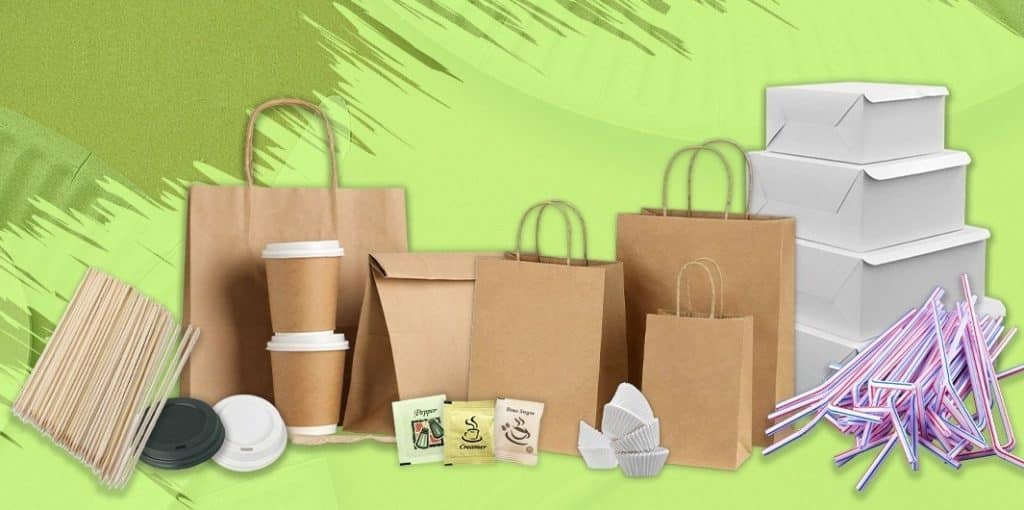
Welcome to the world of food packaging in Malaysia, where innovation meets sustainability. In this article, we will explore the latest trends and advancements in the packaging industry that are revolutionizing the way we store, transport, and consume our food.
Malaysia is renowned for its diverse culinary scene, and the demand for high-quality and convenient packaging solutions has never been greater. From eco-friendly alternatives to traditional materials to smart packaging technologies that enhance food safety, the industry is constantly evolving to meet the changing needs of businesses and consumers.
The Importance of Food Packaging in Malaysia
Food packaging plays a crucial role in Malaysia’s thriving food industry. It serves as more than just a vessel for storing and transporting food; it is a vital component of branding and product differentiation. The right packaging can attract customers and communicate the value of the product inside.
One of the key considerations for food packaging in Malaysia is ensuring the safety and freshness of the food. Malaysia has stringent regulations in place to ensure that food packaging meets the highest standards of hygiene and quality. Packaging must protect the food from contamination, spoilage, and damage during transportation.
Additionally, food packaging in Malaysia also serves as a means of extending the shelf life of products. By using advanced packaging technologies, such as modified atmosphere packaging (MAP) and vacuum sealing, food manufacturers can prolong the freshness of their products, reducing food waste and increasing customer satisfaction.
Types of Food Packaging Materials Used in Malaysia
In Malaysia, a wide range of materials is used for food packaging, each with its unique properties and benefits. One of the most commonly used materials is plastic, due to its versatility and affordability. However, there is a growing demand for more sustainable alternatives.
Biodegradable and compostable materials, such as plant-based plastics and paper, are gaining popularity in Malaysia. These materials offer similar functionalities to traditional plastics but have a lower environmental impact. They can break down naturally over time, reducing the accumulation of plastic waste in landfills.
Another sustainable option is glass packaging, which is not only recyclable but also preserves the taste and quality of the food. Glass containers are commonly used for sauces, jams, and beverages in Malaysia, providing a premium and eco-friendly packaging solution.
Food Packaging Regulations in Malaysia
To ensure the safety and quality of food packaging in Malaysia, the government has implemented several regulations and guidelines that manufacturers must adhere to. The Malaysian Food Act 1983 and Food Regulations 1985 outline the requirements for food packaging materials, labeling, and storage.
According to Malaysian SEO service experts, food packaging materials must be safe for direct contact with food and should not transfer any harmful substances. Manufacturers must ensure that their packaging materials comply with the permissible limits of heavy metals, such as lead, cadmium, and mercury.
Labels on food packaging should provide accurate information about the product, including the ingredients, nutritional content, and allergen warnings. The packaging should also display the manufacturer’s details and the manufacturing date or expiration date.
Sustainable Food Packaging Options in Malaysia
As sustainability becomes an increasingly important consideration, the food packaging industry in Malaysia is embracing eco-friendly alternatives. One such option is biodegradable packaging made from plant-based materials such as cornstarch or sugarcane fibers. These materials break down naturally and reduce the environmental impact of packaging waste.
Another sustainable option gaining traction in Malaysia is recyclable packaging. By using materials such as paper, cardboard, or aluminum, food manufacturers can create packaging that can be easily recycled, reducing the amount of waste that ends up in landfills.
Innovative packaging solutions, such as edible or soluble packaging, are also being explored in Malaysia. These materials can be consumed or dissolved, eliminating the need for disposal altogether.
Trends in Food Packaging Design in Malaysia
In recent years, there has been a shift towards more visually appealing and functional food packaging designs in Malaysia. Packaging is no longer just a means of protecting the product; it is now an opportunity to create a memorable brand experience.
Minimalist and clean designs are becoming popular, with emphasis on simplicity and clarity. This allows the product to take center stage and communicates a sense of transparency and authenticity.
Incorporating sustainable and natural elements into packaging design is another emerging trend. Using earthy colors, recycled materials, and organic shapes can convey a sense of eco-friendliness and align with consumers’ growing desire for sustainability.
Benefits of Quality Food Packaging in Malaysia
Investing in quality food packaging can bring numerous benefits to businesses in Malaysia. Firstly, it helps to differentiate products in a crowded market. Eye-catching packaging that stands out on the shelves can attract customers and increase brand recognition.
Good packaging also protects the product from damage during transportation. By using sturdy and secure packaging materials, businesses can ensure that their products reach customers in pristine condition, enhancing customer satisfaction and reducing returns or complaints.
Furthermore, well-designed packaging can enhance the overall customer experience. Easy-to-open packaging, clear labeling, and informative product descriptions can make the buying process more enjoyable and convenient for consumers.
Choosing the Right Food Packaging Supplier in Malaysia
Selecting the right food packaging supplier is crucial for businesses in Malaysia. It is essential to partner with a supplier that understands the specific requirements of the food industry and can provide high-quality packaging solutions.
When choosing a custom packaging boxes supplier for example, consider factors such as their experience, reputation, and certifications. Look for suppliers who have a track record of delivering on time, providing excellent customer service, and maintaining strict quality control standards.
Additionally, it is important to assess the supplier’s ability to offer customized packaging solutions. Every food product has unique packaging needs, and working with a supplier who can tailor their offerings to meet those requirements can give businesses a competitive edge.
Cost Considerations for Food Packaging in Malaysia
Cost is an important consideration when it comes to food packaging in Malaysia. While businesses strive to create attractive and sustainable packaging, they must also ensure that it is cost-effective and aligns with their budget.
It is essential to strike a balance between quality and affordability. Cheaper packaging options may seem attractive initially, but they may not provide the necessary protection or meet the required standards. Investing in high-quality packaging materials can prevent costly damages or recalls in the long run.
Working closely with suppliers to negotiate pricing and explore cost-saving alternatives can help businesses find the right packaging solutions without compromising on quality or sustainability.
Case Studies of Successful Food Packaging in Malaysia
Several Malaysian companies have successfully implemented innovative food packaging solutions that have garnered attention and driven sales. One such example is a local snack company that introduced biodegradable packaging for their chips. By using compostable materials, they were able to tap into the growing demand for sustainable snacks and attract environmentally conscious consumers.
Another success story is a beverage company that adopted smart packaging technology. Their bottles incorporated temperature-sensitive labels that changed color to indicate when the drink was at the optimal temperature for consumption. This unique packaging feature enhanced the customer experience and set them apart from competitors.
Conclusion: The Future of Food Packaging in Malaysia
Food packaging in Malaysia is undergoing a transformation, driven by sustainability, innovation, and consumer demands. The industry is moving towards more eco-friendly materials, streamlined designs, and advanced technologies that ensure food safety and quality.
As businesses and consumers become more conscious of the environmental impact of packaging waste, there is a growing need for sustainable solutions. Malaysia is at the forefront of this movement, with packaging companies actively developing and implementing greener alternatives.
The future of food packaging in Malaysia is promising. With ongoing advancements in materials, design, and technology, we can expect to see even more innovative and sustainable packaging solutions in the years to come. By embracing these changes, businesses can not only meet the evolving demands of their customers but also contribute to a greener and more sustainable future.


